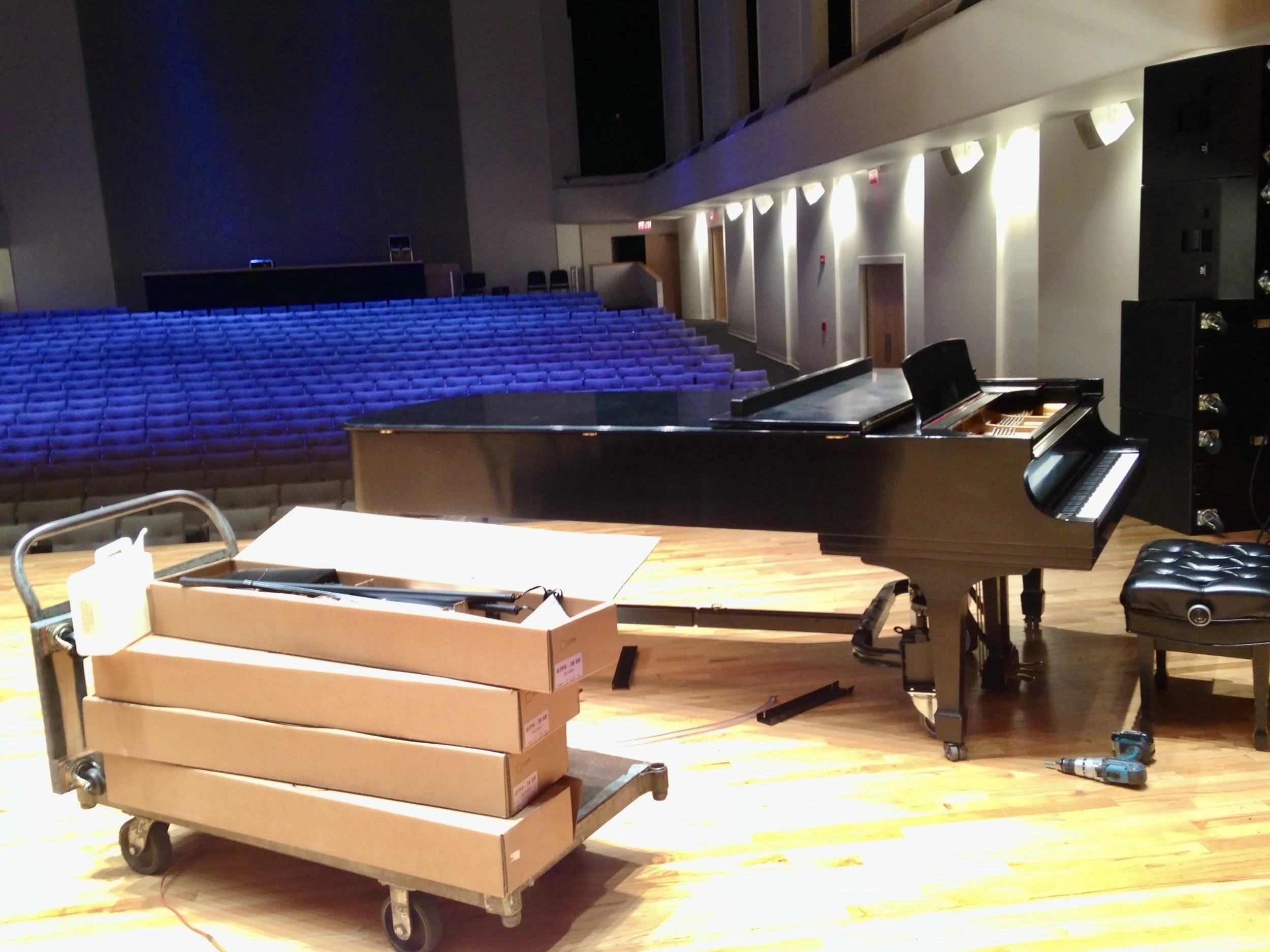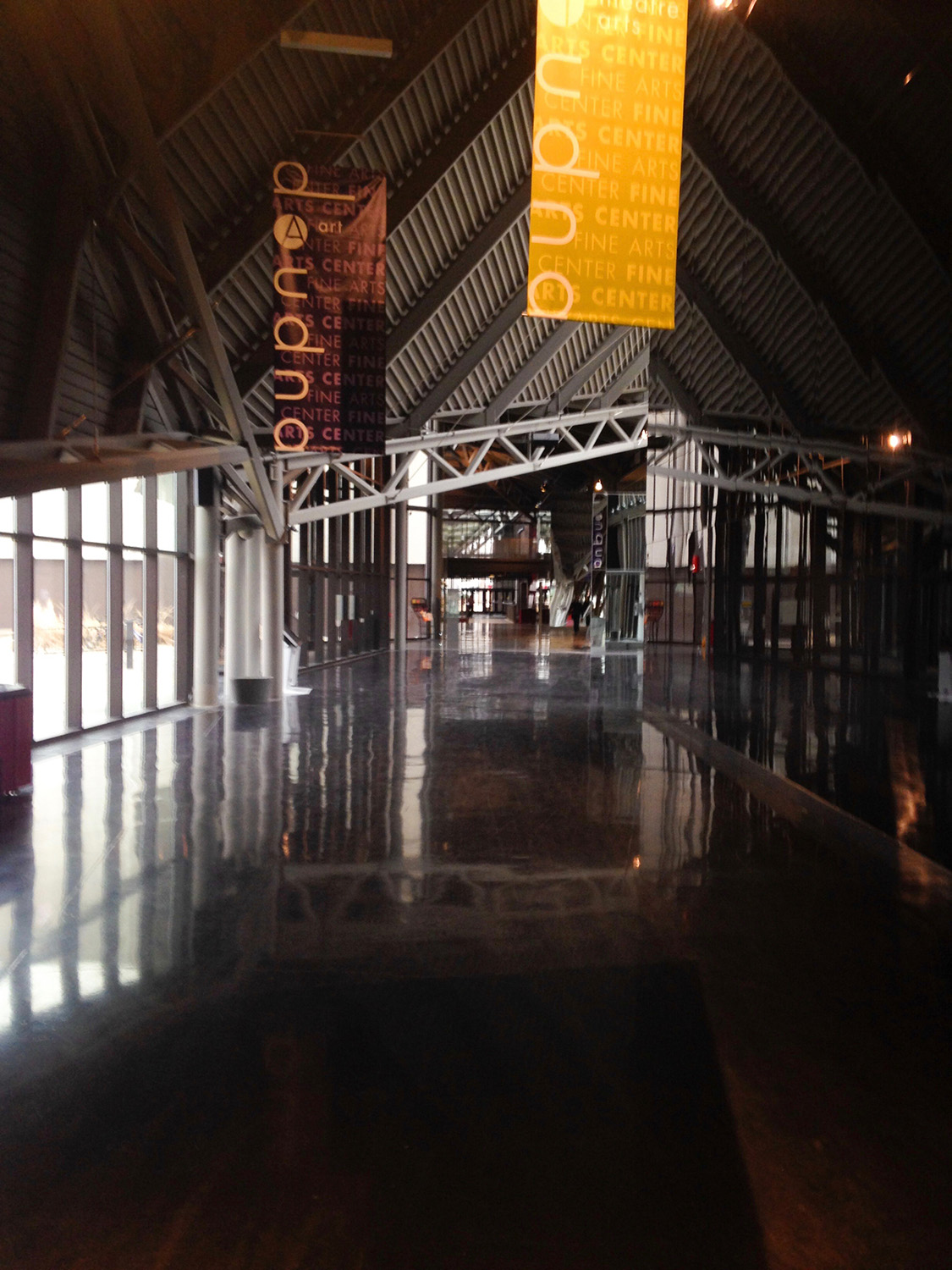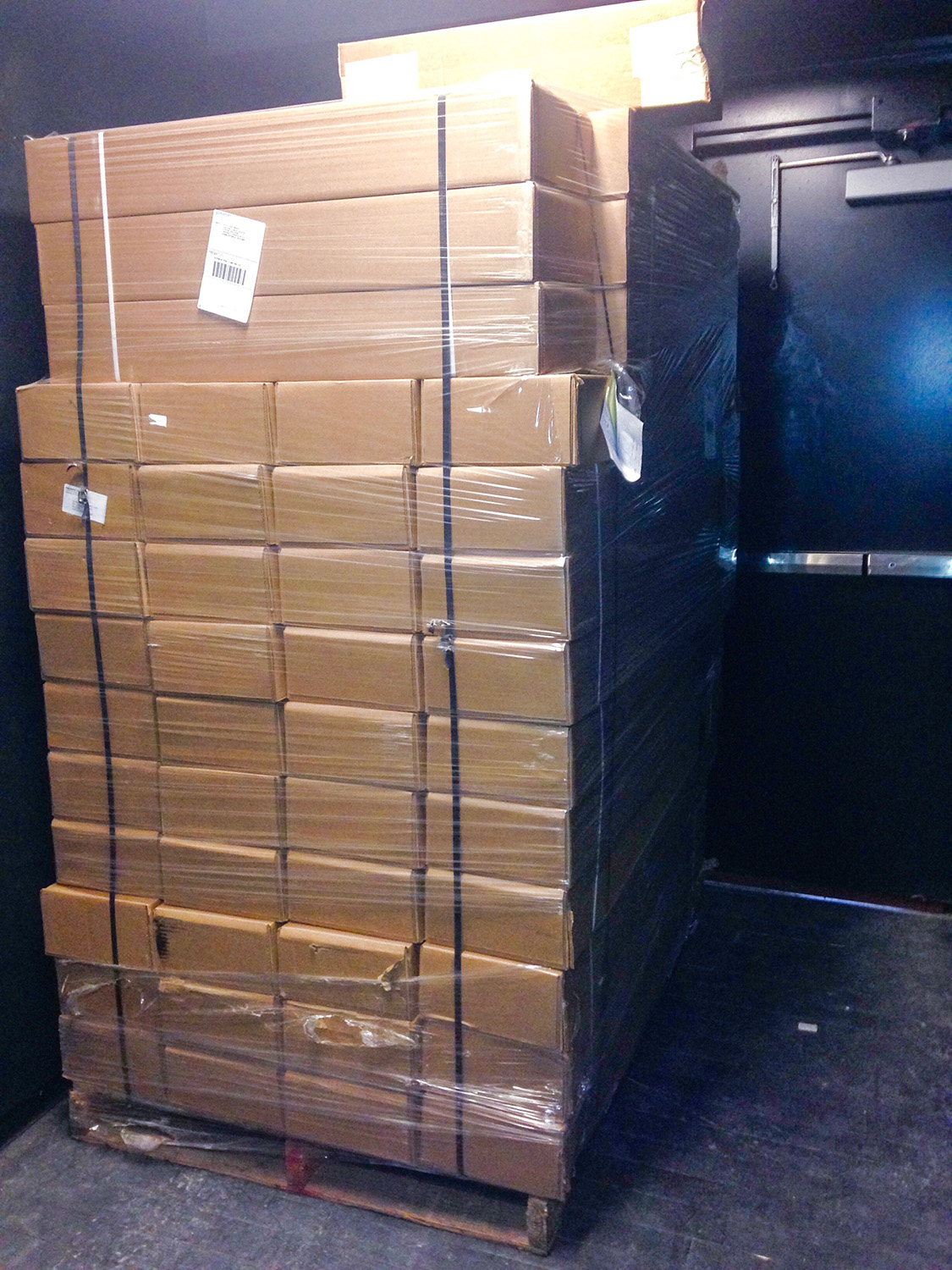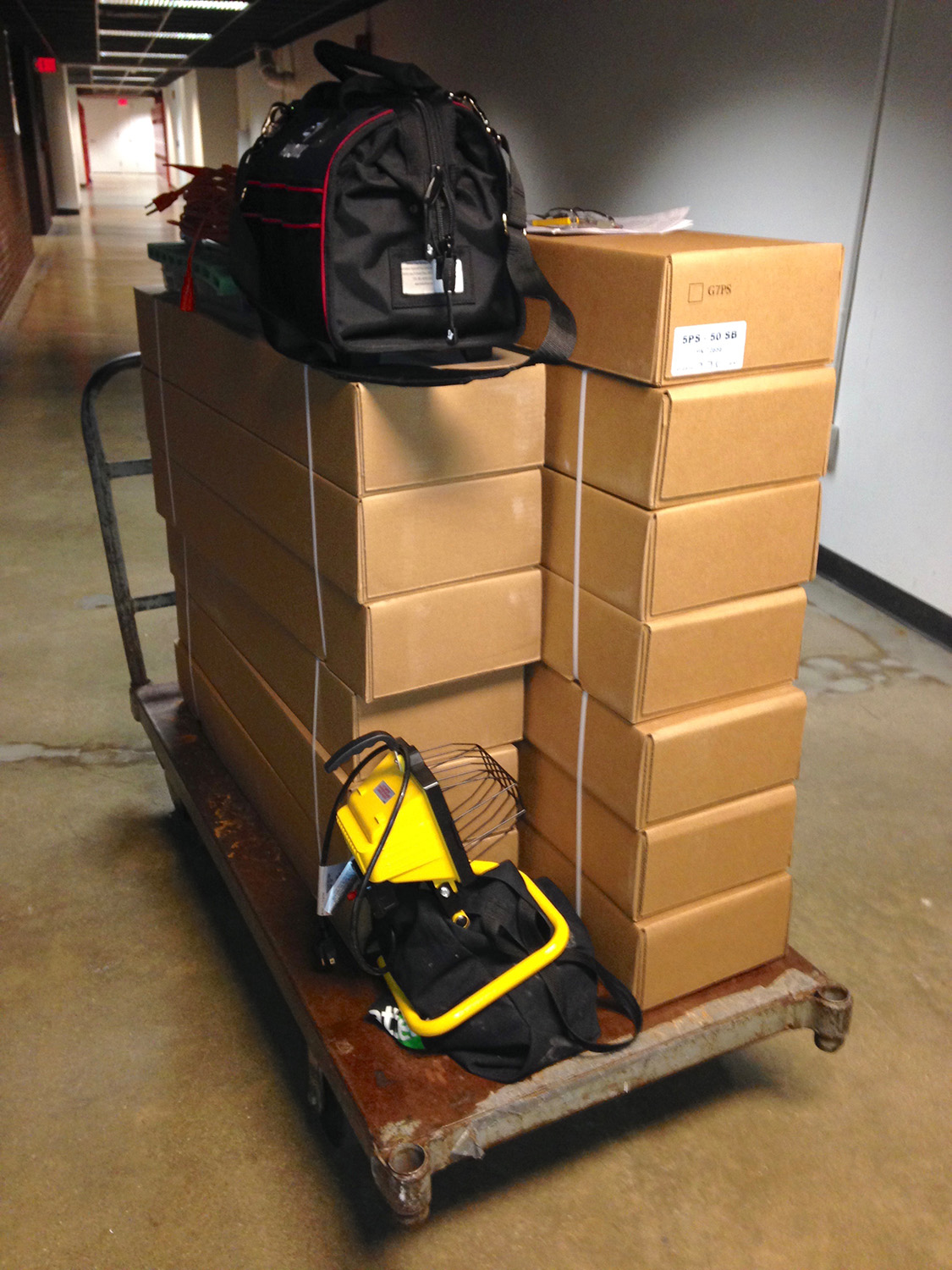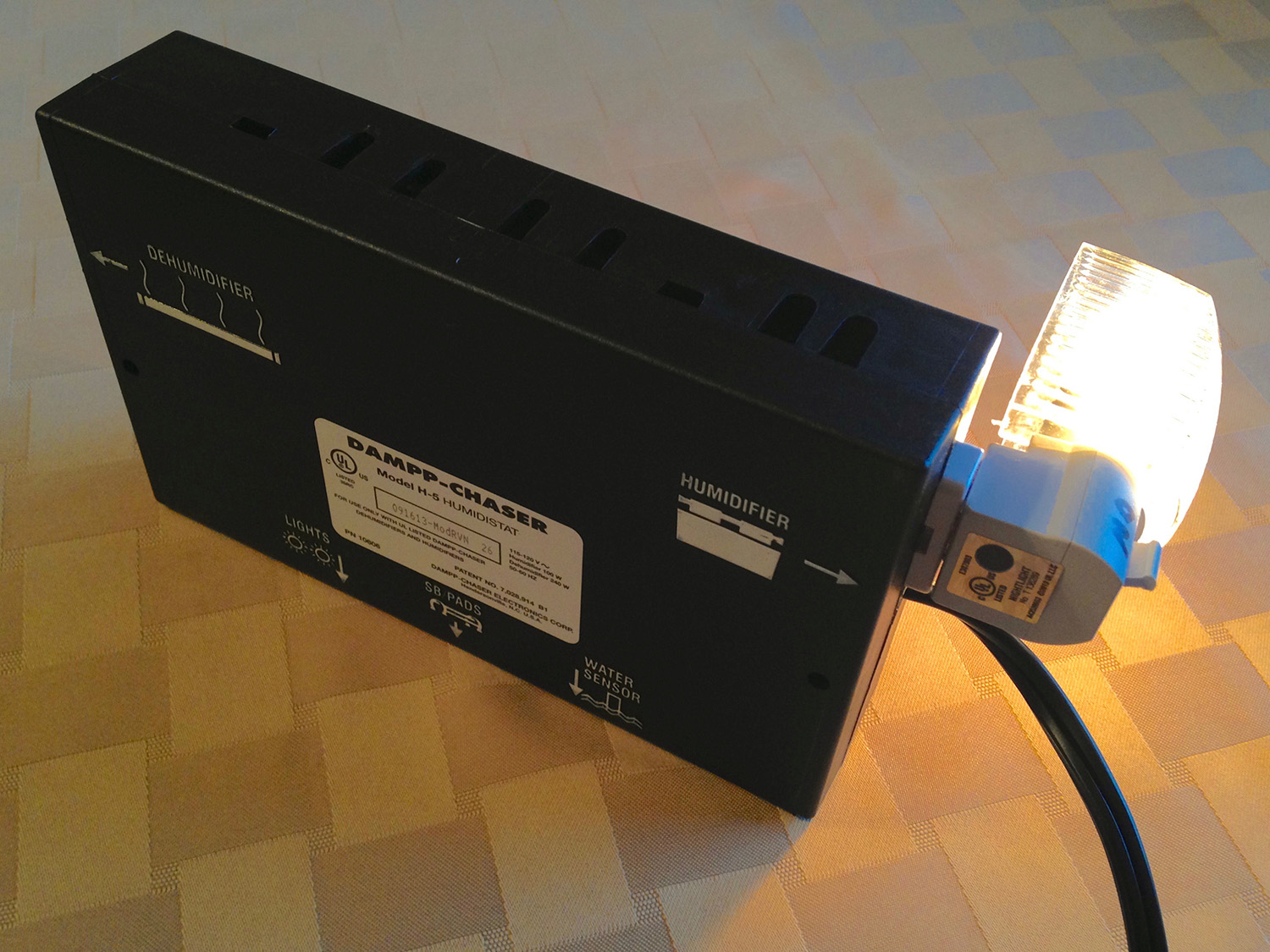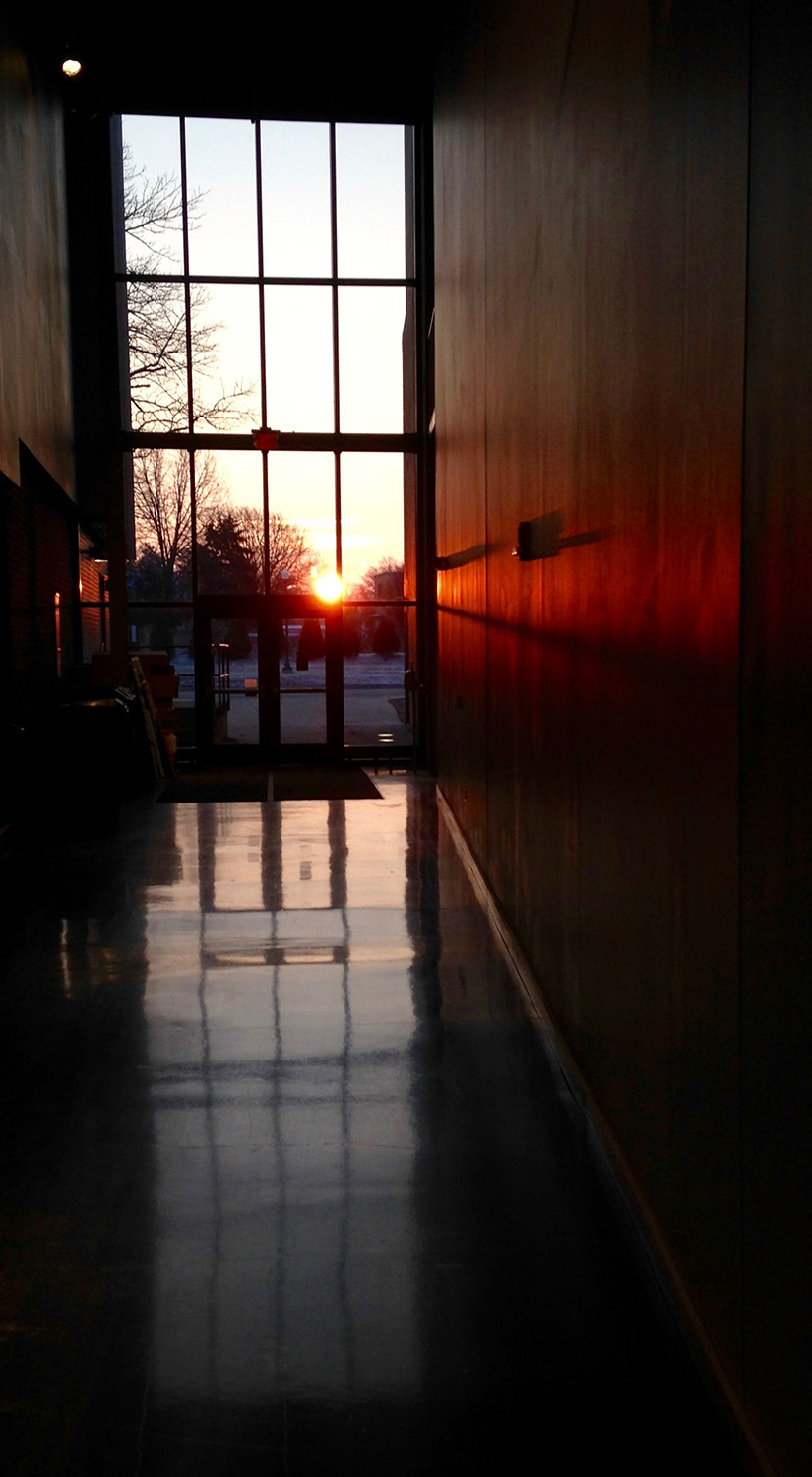By Carl Radford, RPT
(Reprinted with permission from the November, 2014 Piano Technicians Journal, official publication of the Piano Technicians Guild.)
I was in a recording studio, deep in the meditative art of tuning a piano, when I received an email out of the blue that snapped me back into conscious awareness. The email was asking for a bid for the installation of humidity systems for all the pianos in the music department at Eastern Illinois University. In fact they were asking for 54 of them to be installed during their Spring Break.
That would be quite a proposition, installing that many systems such short a time. I typically average about seven installations a year, so this would basically double the amount of Dampp-Chaser installations in one week that I have done over my entire career.
I was intrigued with the possibility though, but never really expected that my bid would be accepted. I felt sure that many other technicians had been tapped as well, and that someone else would underbid me; for all I knew they might have emailed every piano technician in a 250 mile radius. Nevertheless, I went through the process of figuring out the costs involved and submitting a bid. Much to my surprise, the bid was accepted.
I wondered if a music composition professor I occasionally tune for, who teaches at EIU, might have referred me, so I emailed him to find out, but he emailed me back to say that he didn’t know anything about it, and to ignore the fact that his office was a mess.
So, now I had to figure out how world I was going to do this. There were 35 uprights. I figured it would take about an hour apiece for those. And then there were 19 grands, 5 of which were nine foot Steinway D’s. They weren’t interested in undercovers, so I figured on one hour apiece for the grands and two hours for the dual tank installations on the each of the concert grands. Since I had never done a dual tank installation before, I figured the first one would take longer, but by the fifth one I would have it down to an hour and a half. (That turned out to be an incorrect assumption. All the dual tank installations turned out to be well more than two hours each.) So, all in all I figured on about 60 hours, or a lot of 12-hour days. I planned on 7 days total, and anything less would be a bonus.
Working with Schaff was great as always. They were more than accommodating and they delivered all the humidity systems within a day or two on a pallet. They also tacked on an extra vertical and grand system, just in case a part was missing or defective. After all, I didn’t want to have to make the three and a half hour drive down there more than once.
After that, I carefully planned all the tools I might possibly need. I went out and bought a good floor standing work light (worth its weight in gold), and converted one of my piano moving dollies into a lay down dolly, like the kind auto mechanics roll around with under cars. I had already purchased a cordless drill a few months earlier that had been recommended by Consumer Reports. At the time I was concerned it was too much drill for my needs, but it turned out to be fantastic for the job at hand, especially the with high beams that come on when you tap the trigger. An 8 inch long steel tube I specially made before the trip for driving in the pushpins that hold up the vertical dehumidifier rods, along with a decent hammer, also made things go a lot quicker.
The university was exceptionally nice. Ryan, the person who was in charge of the project, showed me around the school where I’d be spending the next week crawling around on my knees and back. The Fine Arts building was modern and new with a great open feeling.
The Eastern Illinois University Fine Arts Building and the stack of Dampp-Chasers
All the pianos were either new or only a few years old. The grands were mostly Steinways and the verticals were all Yamaha uprights.
Walking into the storage room behind the concert hall and seeing the pallet stacked with boxes eight feet high was a little daunting, but I looked on it as a challenge.
Ryan showed me where the microwave for lunch was, how to use their hydraulic pallet dolly, and handed me a master key.
“And oh yeah…” He said. “The power will be off on in a few days, on Tuesday, for repairs, so you might want to plan any installations for that day in rooms that have windows with outside light.”
And with that he was off, and I had the place almost all to myself for a week.
I went to a nearby Thai place that Yelp recommended for dinner, did some playing in one of the practice rooms, rested up in the hotel room, and began early the next morning.
I had initially planned to start with the dual tank installations on the concert instruments, while I was still fresh, however after seeing the layout of the place, and considering a day coming up without power, lights, or elevators, I quickly realized that different strategy was in order. I decided that a better plan of attack was to take care of all the pianos in the practice rooms of the catacombs in the lower level first. That way I wouldn’t have to worry about the lack of light down there, and I could get my stride going on the easier vertical installations. The teacher’s studios on the second level that were more important, and where there was more natural light, would be later, and I’d save the best; the concert grands, for last.
One thing I didn’t plan on was how long it would take to simply find the rooms and distribute the systems around the school. The hydraulic pallet dolly turned out to be too big and cumbersome to be useful, but fortunately there was a metal cart just the perfect size for the job waiting magically for me by the elevator. I’m not sure what I would’ve done without that.
Even so, just figuring out where the rooms were that each system went to, getting them there, and checking them off the list, took at least an extra hour or more each day.
I worked non-stop from 7:00 am, when the building opened to 7:00 pm every day, stopping only to answer phone calls from clients and eat lunch in the theater green room.
As things went on, the installations not only got faster and more efficient, but became higher quality installations as well. Since most of the verticals were all the same models, it didn’t take long to slash my normal installation time in half. I slashed open the boxes as well, in three smooth Samurai strokes with an X-Acto knife, rather than struggling to peel or tear the boxes open. That alone probably saved about four or five minutes a piano. I timed myself in the beginning for fun, but as the week wore on and my patience wore thinner, I couldn’t have cared less about timing anything anymore. Nevertheless, my fastest recorded time for a Yamaha P22 vertical was 32 minutes. The Yamaha T121 uprights took a little longer, probably around 40 minutes each. Once I got into a rhythm it was kind of self-perpetuating, and really at times rather Zen-like.
It was quiet and dark down in the catacombs by myself. At one point a lone music student was in one of the practice rooms with her oboe. She was the only person I’d seen the entire day. She gave me a concerned look when she suddenly realized she was by herself near a disheveled man with a hacksaw in the next practice room over. She packed up pretty quickly after that and left. Apparently, seeing the hacksaw trumped seeing my peaceful, Buddha-like gaze. I was happy when I eventually completed all the installations down there and graduated to the second floor.
The six and seven foot grands usually took under an hour. My best recorded time for those, before I stopped keeping track, was 47 minutes.
Up to that point I had only ever needed to do a between the beams installation once or twice in my life (as opposed to the more common installation with the support rods positioned above the beams). I much prefer to do above the beams installations, because it is much easier, but there wasn’t enough clearance on most of the Steinways for placing the cords and watering tube between the beams and the soundboard. As a consequence, almost every grand involved hacksawing the steel rods to fit the water tank between the beams and positioning it a little lower for more clearance. For this task I created a cardboard template, so I wouldn’t have to measure the rods every time. This saved a lot of time and effort. Fortunately, I had thought ahead to bring along the aforementioned, bone-cutting hacksaw.
Rolling around underneath all the grands on the makeshift piano dolly was not only fun, but highly efficient. This was not something I had never done before, and it worked like a charm. The back of my head became sore from hitting the edge of the dolly, so the kneepad I brought became used less as a kneepad and more as a head-pad. I put some Velcro on the back of it so it wouldn’t slip off the dolly. This worked great until I got to the concert grands on the last day, because they all had piano trucks underneath them, and the rolling around on dolly was no longer possible. The only way to get around under them was crawling over the piano truck in back wrenching positions all day long. Fortunately, there was just one day of that.
A Dampp-Chaser installation in a concert grand piano
I always test the humidifier rod, the dehumidifier rods, and the humidistat to make sure they are functioning properly before I install them. This was especially important in this case, because I didn’t want to drive seven hours for a callback for a humidistat or anything else that might be defective. Plugging in the dehumidifier rods to see that they warm up was an easy test, but what I had been using for testing the humidistat was a night-light that was finicky, because it had a photoelectric sensor that didn’t always allow the bulb to come on if the room light was too bright. By the first day I quickly realized it was too unreliable for the job. I went to the local hardware store and picked up a plug-in night light with no photoelectric sensor and just a simple on/off switch. After that I got instant test results on both the humidifier and dehumidifier outlets on the humidistat, and it easily cut five minutes off my time for each system. Best $1.49 I’ve ever spent.
Ten installations and twelve hours a day seemed to be my limit. My mind and body were Jell-O after that point and I couldn’t will myself to continue anymore. I had to eat dinner, veg-out for a bit and hit the sack. Still, ten a day was pretty good. The second to the last day I did manage to install twelve systems in one day — ten verticals and two grands.
The day the lights went out in Dixie certainly slowed me down a bit. I had distributed the boxes for those rooms the night before, so I didn’t need to deal with that. I had a headlamp, but after several hours the batteries started to wear down and often the only light I could rely on was the one from the cordless drill. I was very glad when the power finally came up mid afternoon and I could use the work light again. I think I only installed nine that day.
Everything was going more smoothly than I had could have hoped for. There was only one minor snafu. The original bid called for 54 Dampp-Chasers. When I was about half way through and I began numbering things, I realized that they had added two verticals to the list and there were actually 56 pianos. It was Spring Break, so I wasn’t sure I’d be able to get a hold of anyone to clear adding two more systems to the cost. I had to make an executive decision, so I went ahead and installed the two additional humidity systems. I already had the one extra unit that Schaff had included with the original shipment, and I called Don and ordered another one from Schaff. To my surprise, it arrived by the next morning. I emailed the purchasing department and explained the situation, and in a few days I received an email back saying to go ahead and submit an invoice for the extra two units.
As I was nearing the end, I only had a couple more pianos left, and Ryan came to see how I was getting on. We made an appointment to go over operation of the systems with the head of the music department. He was an affable gentleman, who was already a fan of the Dampp-Chaser systems, being that he had one on his own piano at home. He liked that I had written the room number in thick black magic marker on the bottom of each watering can so they didn’t get mixed up or lost.
He was very happy about everything, and had only two concerns. One was the logistics of how, and who, would go around and water so many pianos. The other concern was that the professors might not see the flashing lights to know it was time to water the piano. I like to recess the lights in a few centimeters, so they won’t get bumped and possibly break the bulbs, but he thought if the professors didn’t see the lights, the pianos wouldn’t get watered.
True enough. So, the last thing I did before I left was go around to each piano and reposition the lights out to the edge where they were most visible.
This was more complicated on the Yamaha T121 uprights though. They have metal underneath the keyslip, so I couldn’t screw the lights in there, and I found out (the hard way) that I couldn’t open the bottom board if I put it on the side near the leg. The only place I could think of was to recess it four inches or so under the keybed where no one was able to see it.
I called Dampp-Chaser. At first they didn’t know the answer either, but they called me back in a little while and told me to use Velcro. Oh, yeah! Velcro—the answer to everything. Years ago Dampp-Chaser used to put Velcro on all the lights. I’d forgotten all about that. Fortunately, I had just enough Velcro in the trunk of my car to reposition the rest of them.
The last day lasted all day and all night too. I had a call for an emergency tuning back in Chicago the following day, and so I was bound and determined to finish everything up that day, so it became a marathon. I thought the dual tank installations would go quickly once I did one, but it was challenging crawling around on the piano trucks, the placement of the cords and tubes was more critical in order to keep them out of sight-line of the audience, and I wanted to be sure that these installations were as good as I could make them. I’m grateful for the experience though, as I had always wanted to do one, and I was very happy with how it turned out. I was glad I chose to save the best for last.
I finally finished up at about 11:00 pm on the sixth day (one day ahead of schedule), went back to the hotel and collapsed. I was tired, but satisfied. I dropped off the master key and headed back to Chicago the next morning. Sore and exhausted, it took the whole weekend to recover.
It was a lot of work, but a very enjoyable experience; maybe not exactly nirvana, but enlightenment for sure.
Visit our online store for
Piano Life Saver replacement products & supplies.
